Everest MaximAR 302439
The Everest is a machine with movable pinwheel cylinder, in the tradition of Piscicelli, but with 10-key-set instead of levers. I have an Everest Z4 somewhere in a dark cupboard which is in dire condition, and missing lots of buttons, which makes it hard to restore. But then this one popped up. The seller informed me that the first number in the revolution counter was missing, but I thought I could do something about that. When the machine arrived, two buttons were broken off, the side was bashed in and the "R" button was stuck, apparently because the steel lever was bent so badly inside the machine that it rubbed the side of the slot in the front plate. Groan. But other than these issues, the machine was in working condition.I first turned my attention to the missing counter wheel. You can see that the rightmost wheel in the counter appears to have just the gear, and not the indicator with the numbers.
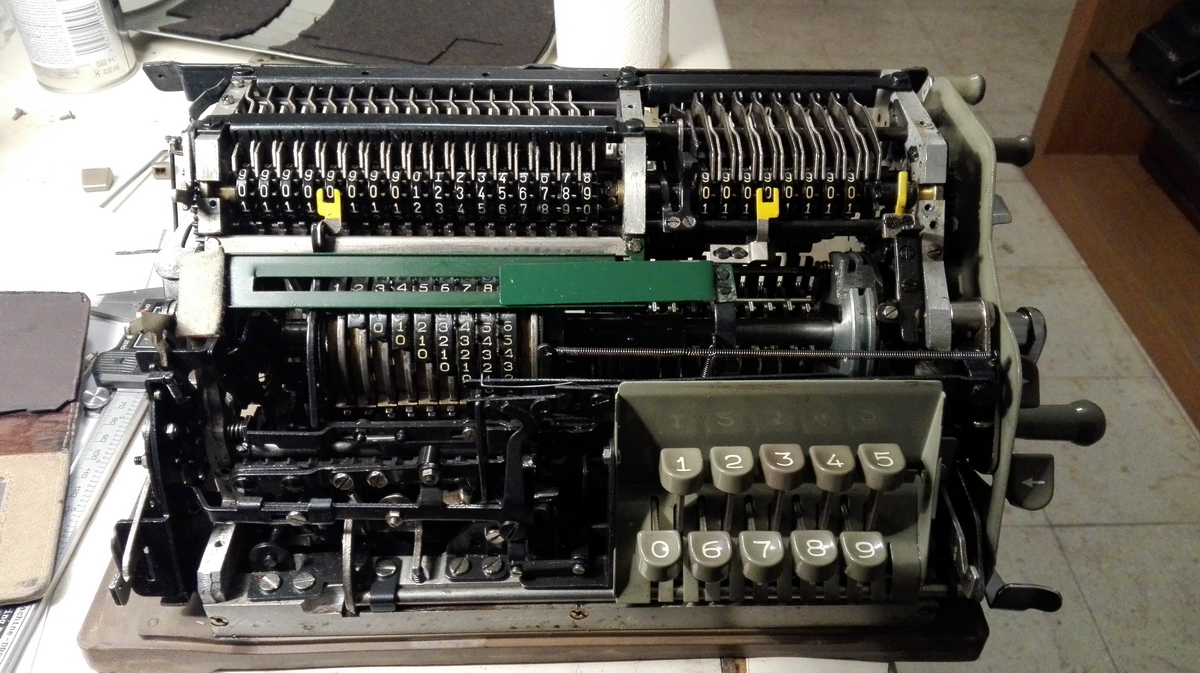
I verified that the metal bits were all there, and that that carry worked. This all turned out to be fine, it was just the plastic "collar" with the numbers that was missing. So I made a template for the 5.35mm axle and sculpted an 18mm disk 3mm wide in Fimmo clay - like this.
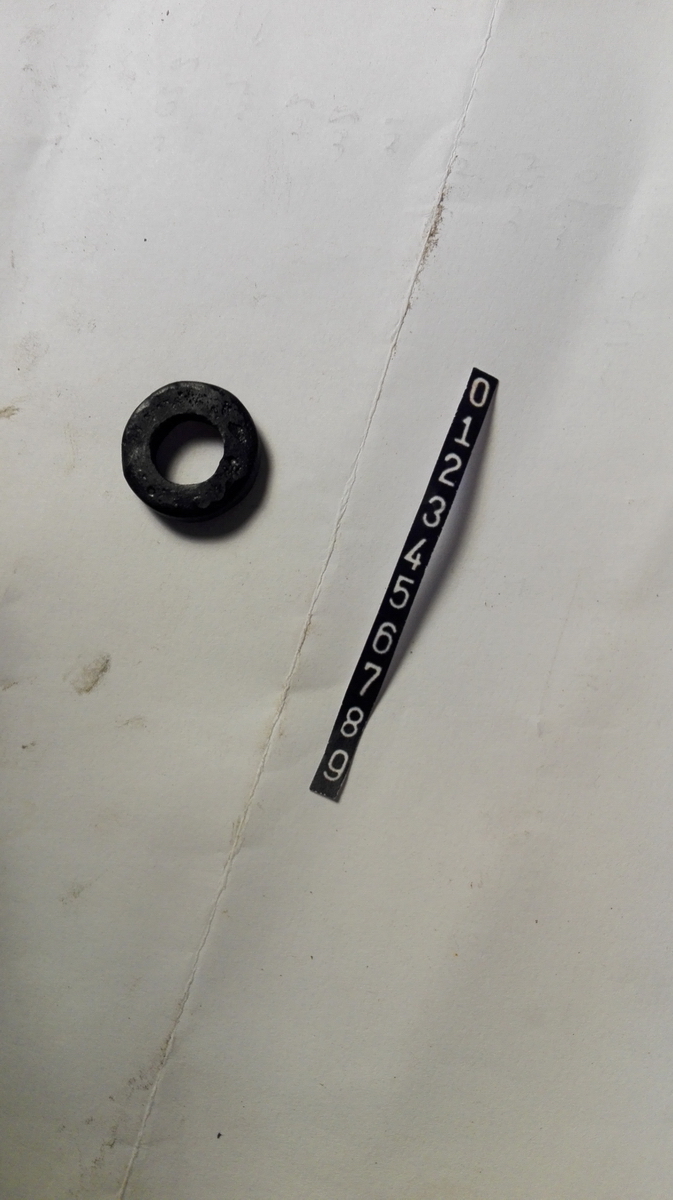
Also, as you can see in the picture, I pasted together a strip of numbers on the computer from a photograph, and printed a test strip 57 mm long.
After heating the Fimmo to 110°C for 30 mins, it sets, and then I cut cut it in half so it would fit around the spindle, and filed it so it it would also fit in between the gear and collar.
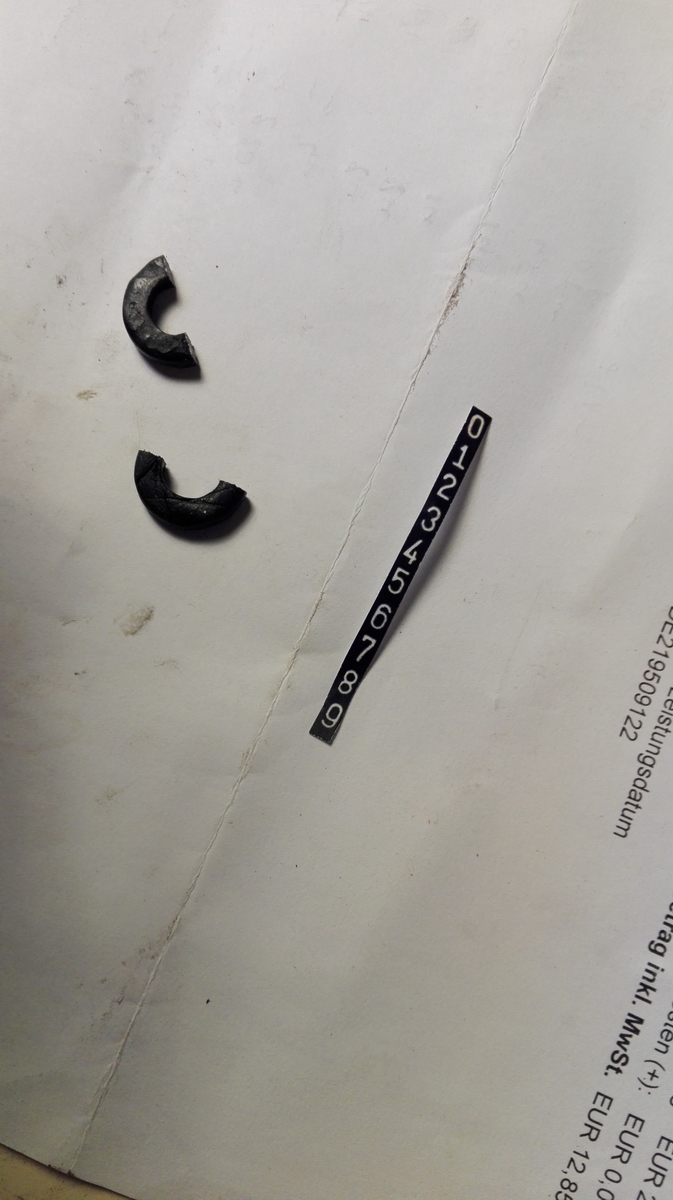
Once I was satisfied, I glued it in place with cyanoacrylate.
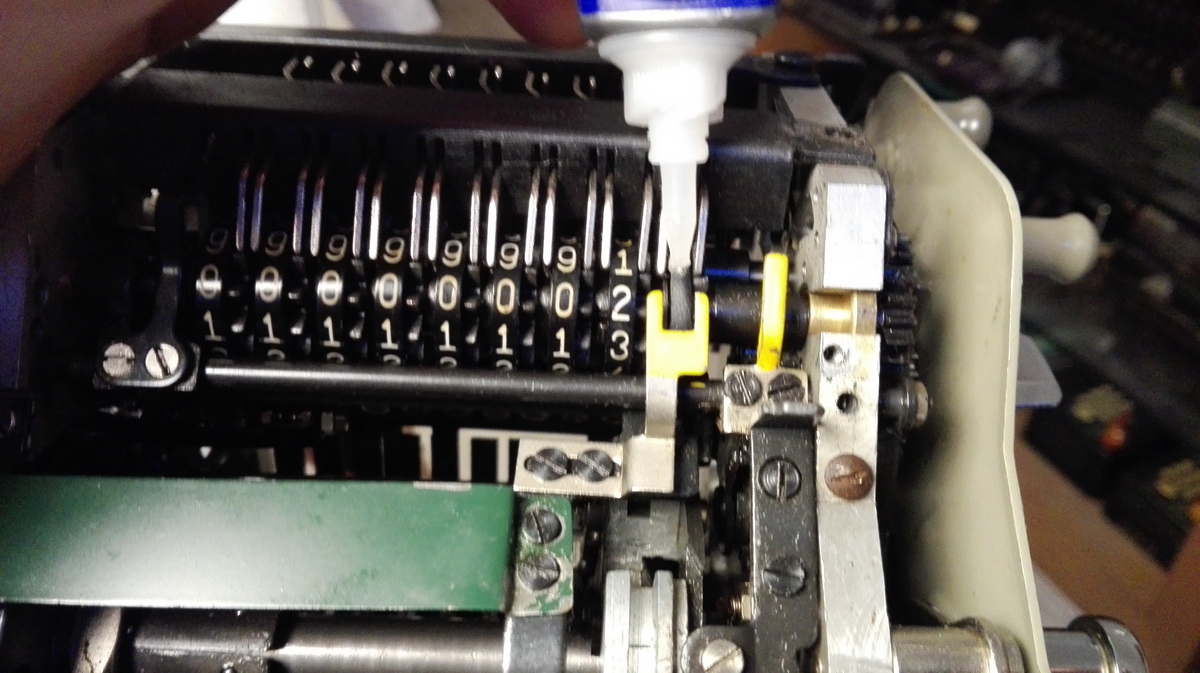
Test-glueing around the periphery gave a shift of half a number by the time we arrived at 9, so a new strip was made to compensate, and it was glued in place, and tested
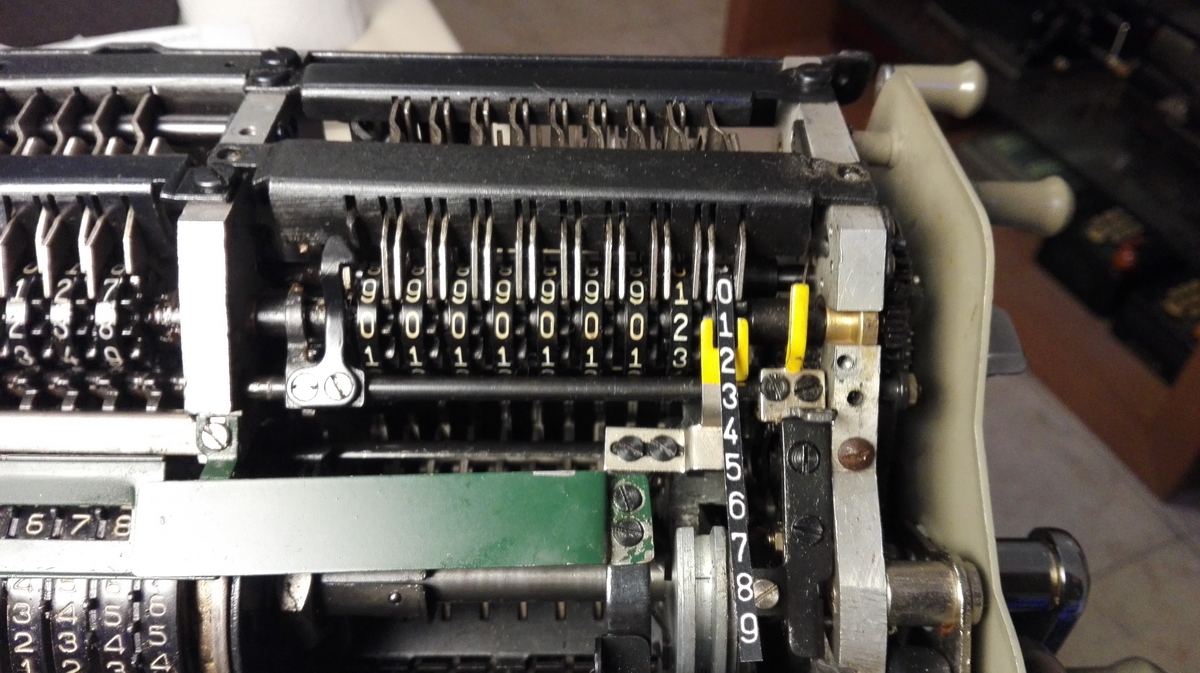
Finally, it was given a coat of clear varnish. Repair completed!
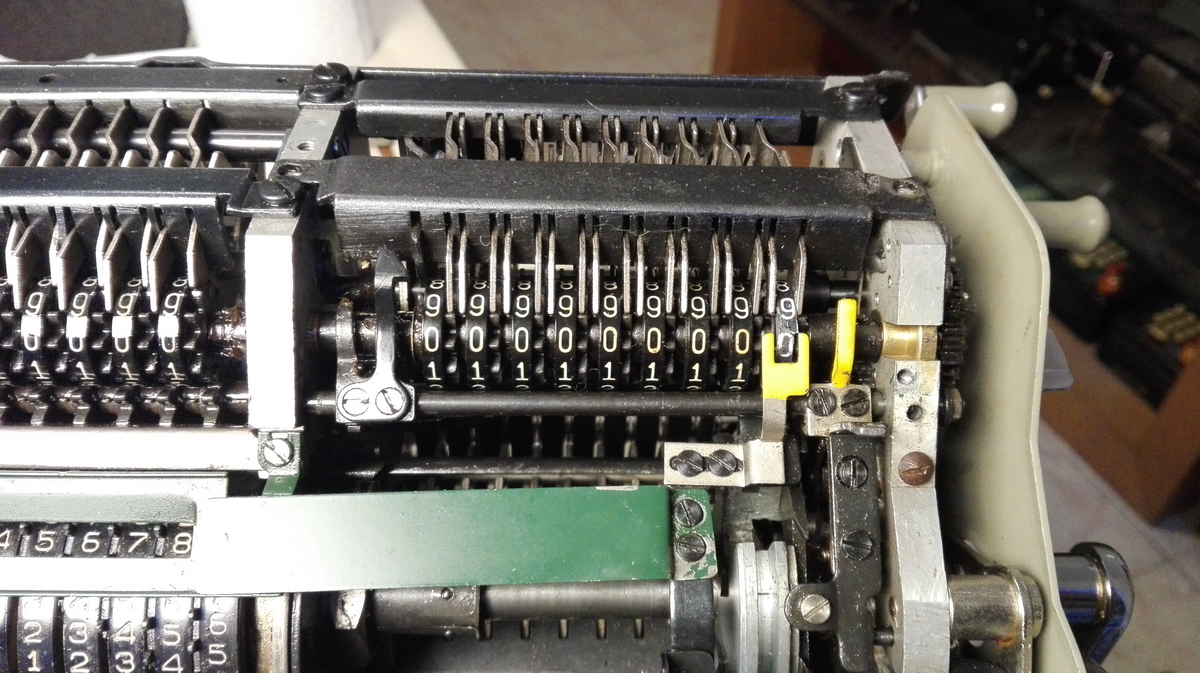
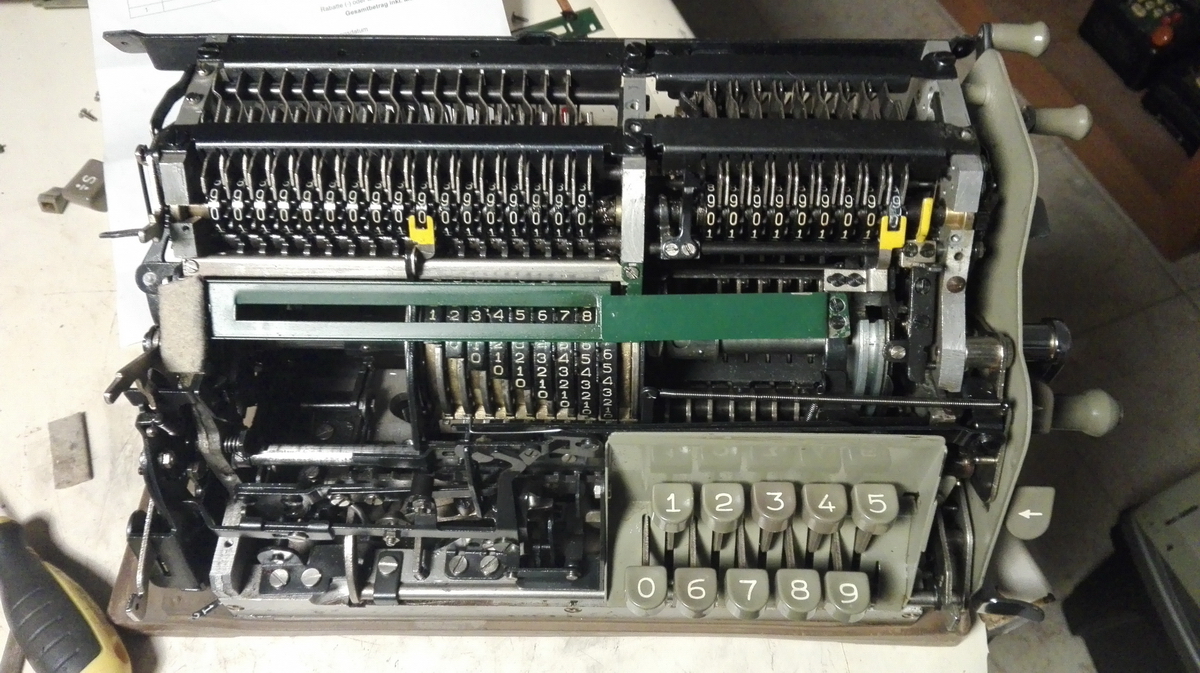
After that, it was a matter of glueing the buttons back together, and remounting the cover.
Some pictures of the machine:
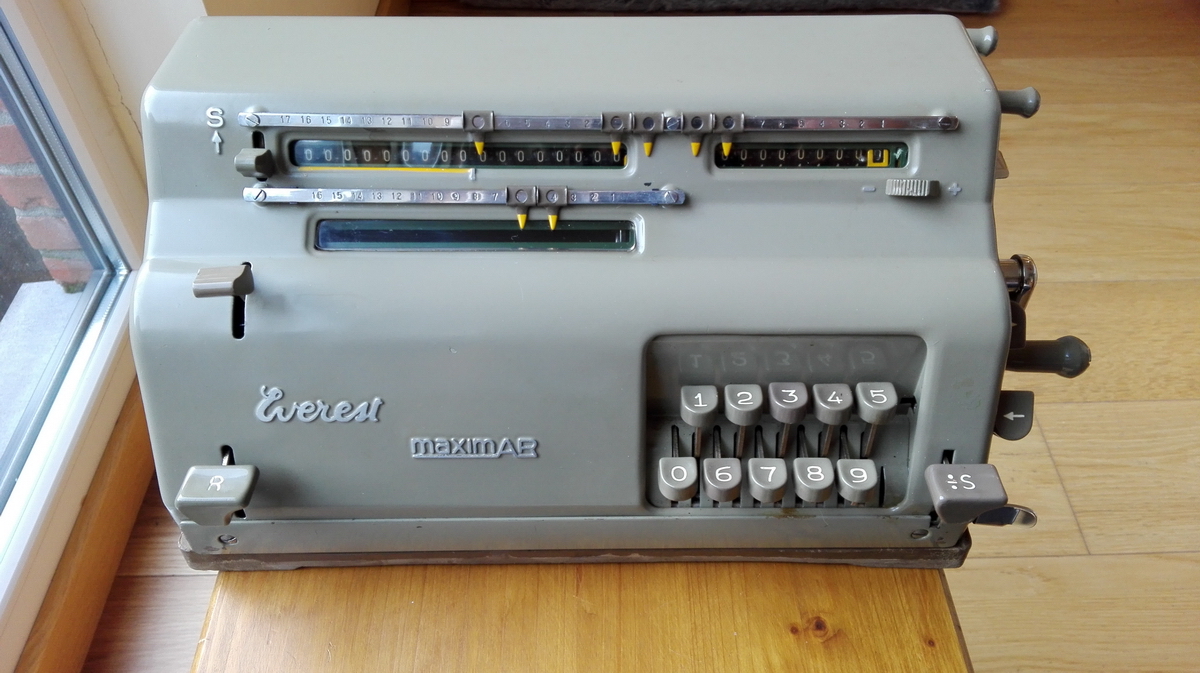
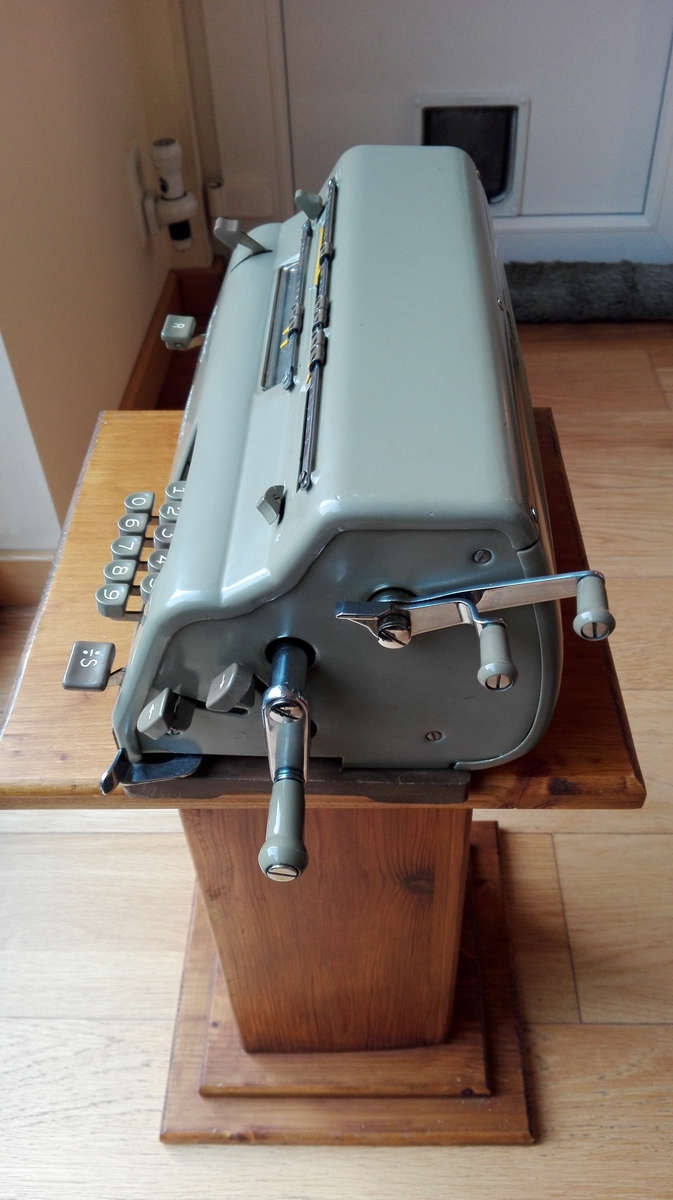
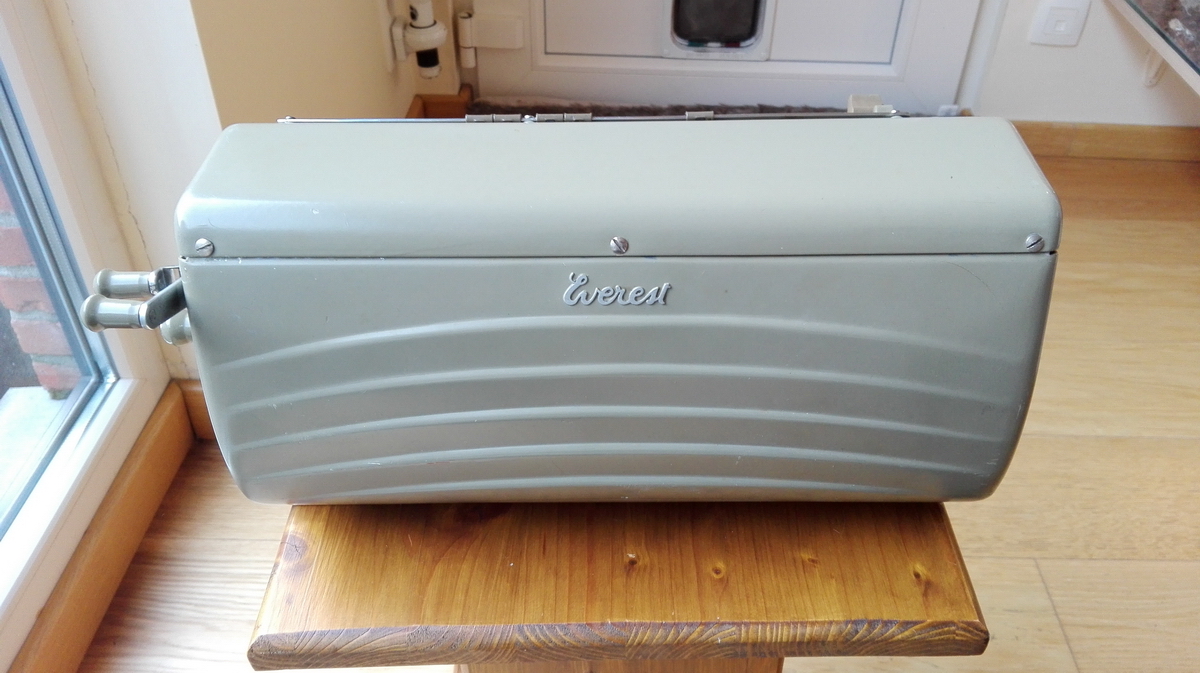
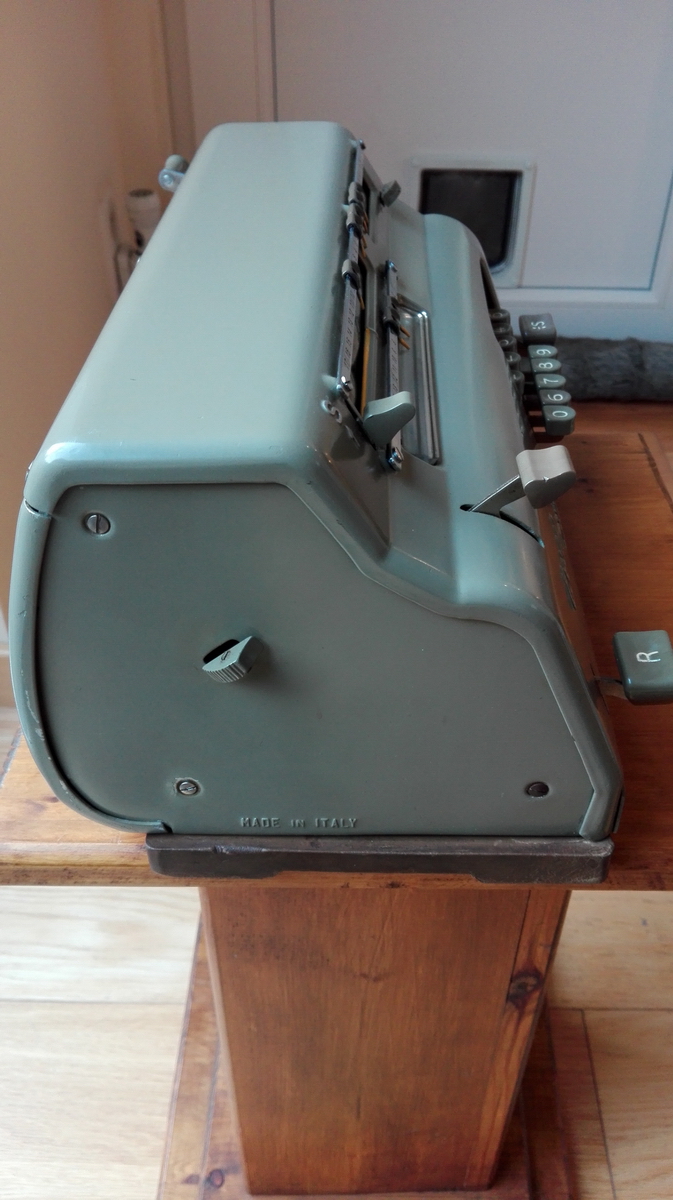
The machine works by keying in a number on the ten-key keypad. In addition/subtraction mode, the input stays on the right of the input register. If you press the division key, the input shoots to the left, so that the leftmost number on the input corresponds to position 8 in the counter - the rest of the input register is zero-filled, and a green shroud is pulled along so the missing part of the input is covered. John Scriven writes that when the division/S key is pressed, the next turn of the crank does not increase the counter, but that feature, if it was ever there, doesn't work in my machine. If you really push the S div button to completion, it will at the end automatically set the counter to negative, so you can start dividing straightaway. There is also a second setting for the input, where it goes all the way to the left.
The machine also has back transfer, which amounts to a memory functionality as well - since there are 17 places in the result, there is ample space for backtransfering numbers from result to input, then move the input to the far left, and crank them into the left section of the result register. The yellow line indicates the split in the clearing, everything left of the line stays in the register if the S button right below the register is flipped up. Some pictures to demonstrate:
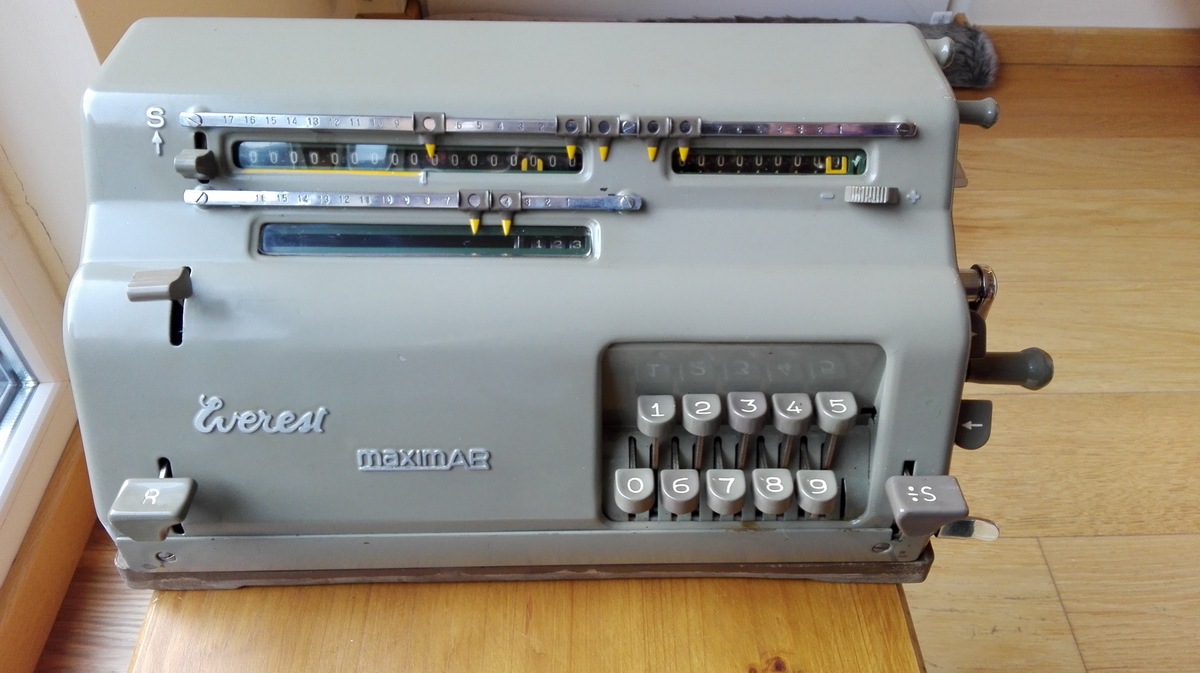
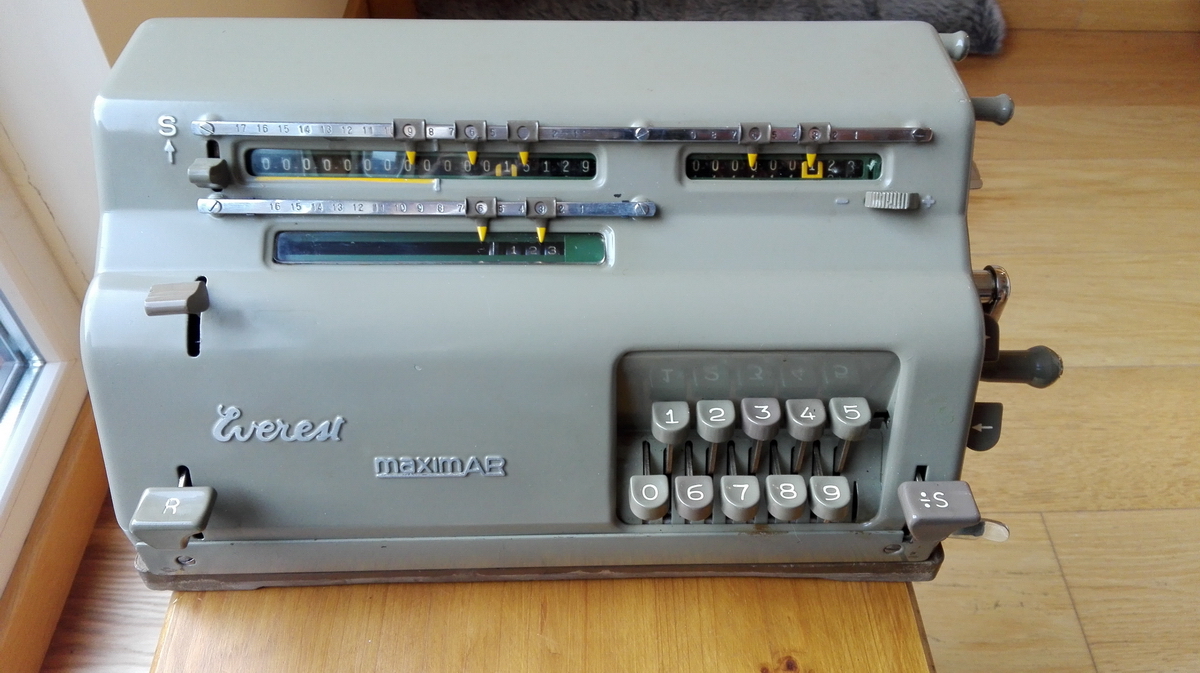
123 x 123. Backtransfer works by sliding the middle handle on the left down, which clears the input to zero, leaving it where it currently stands.
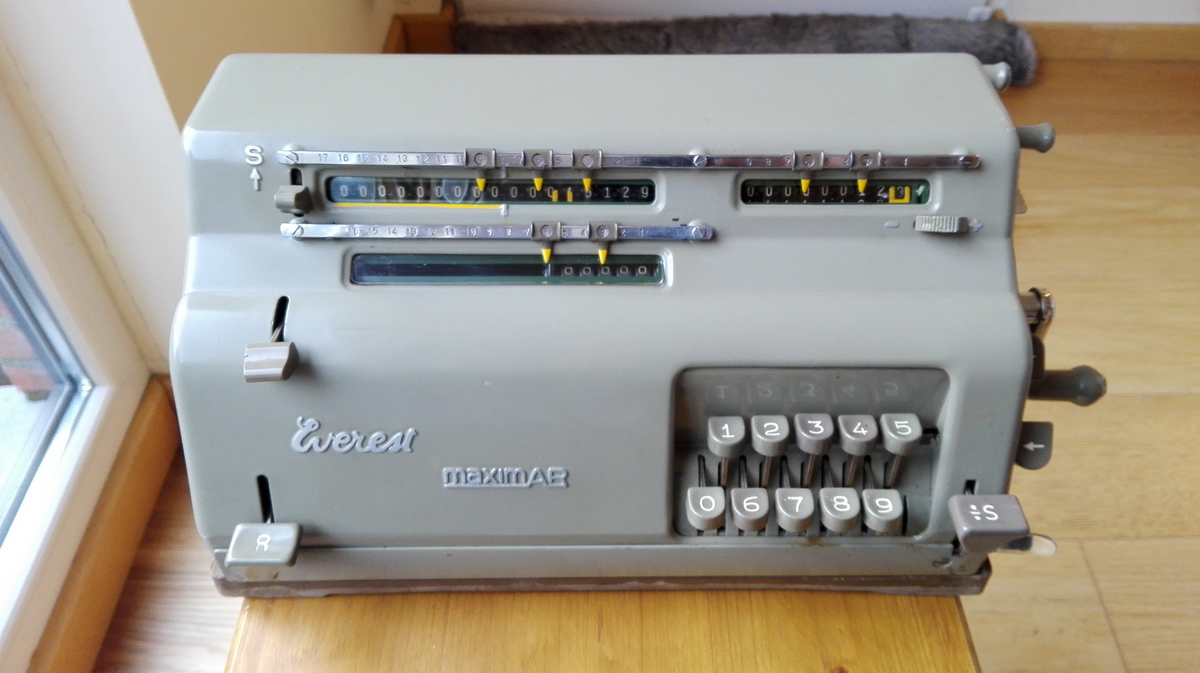
Then pressing "R" shifts the input slightly to the left and slides the shroud back to the right, and clearing the register transfers the numbers to the input.
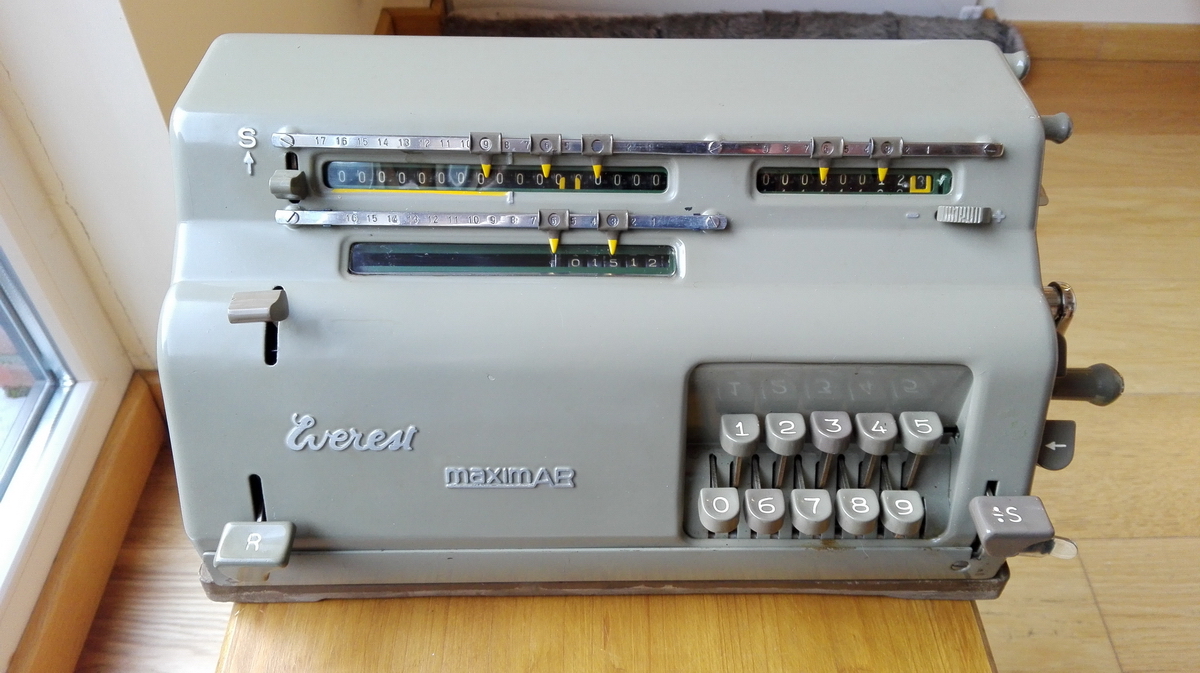
On release of the R button, the input jumps one place to the left.
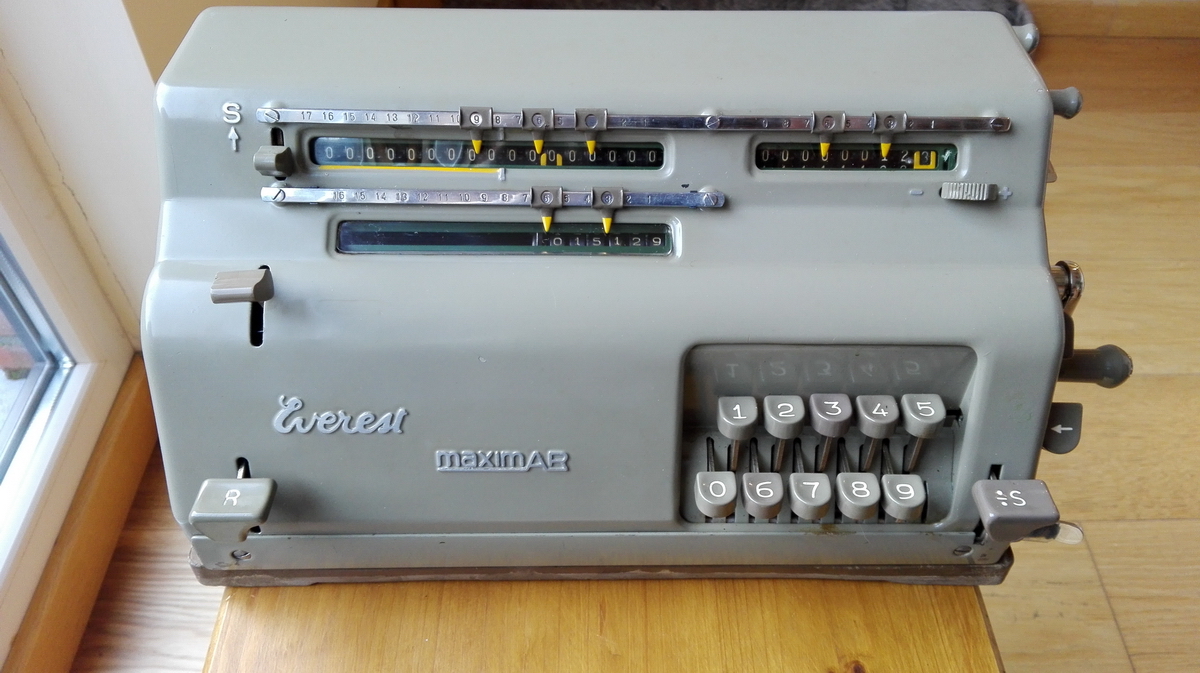
The input register can now be tabbed through the "S" part of the register, and added to "S"
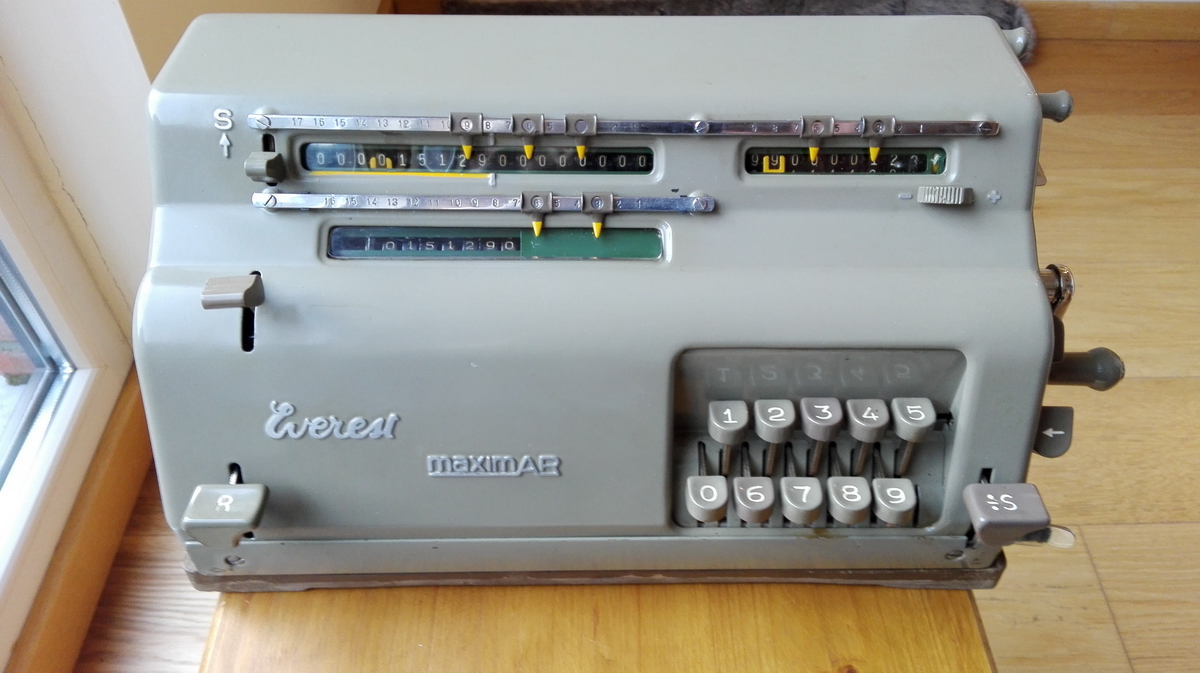
By flipping the S switch up, all registers can now be cleared, but the "S" register will remain untouched.
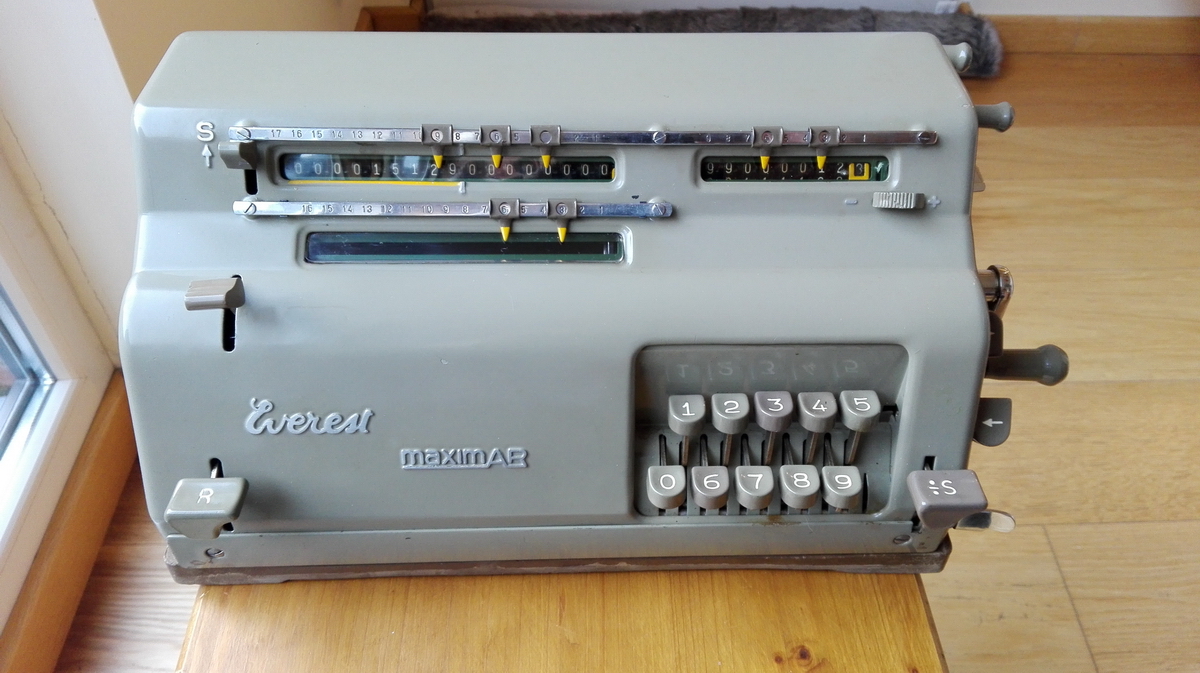
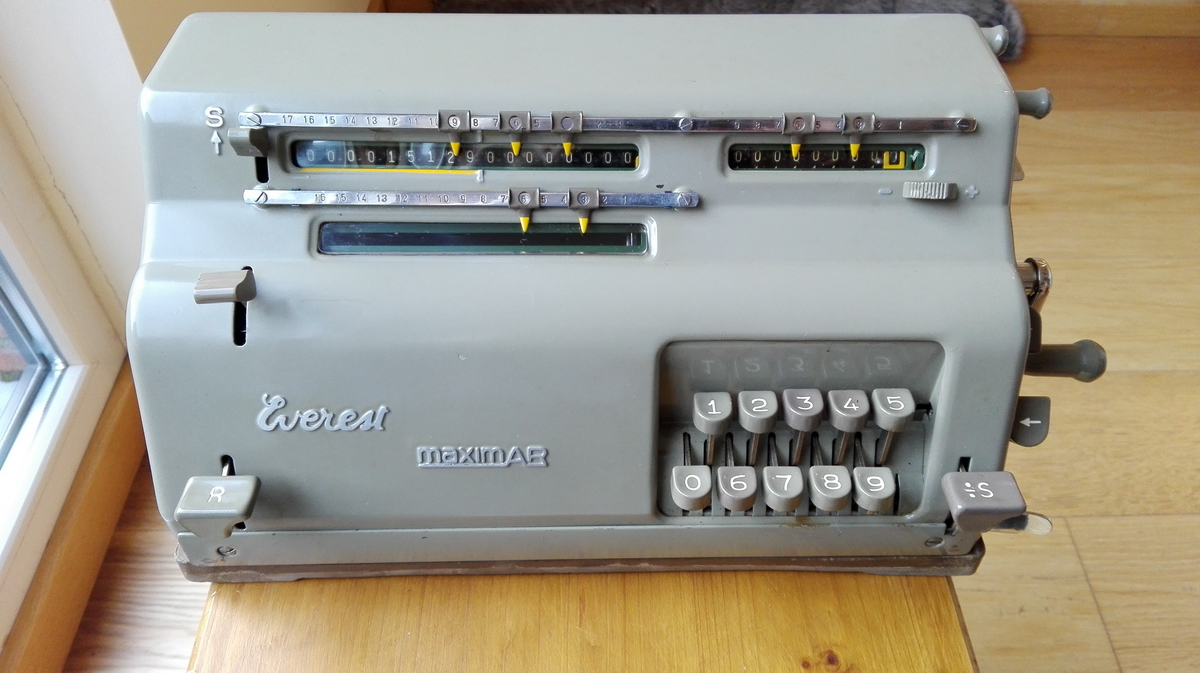
Now we do 345 x 345
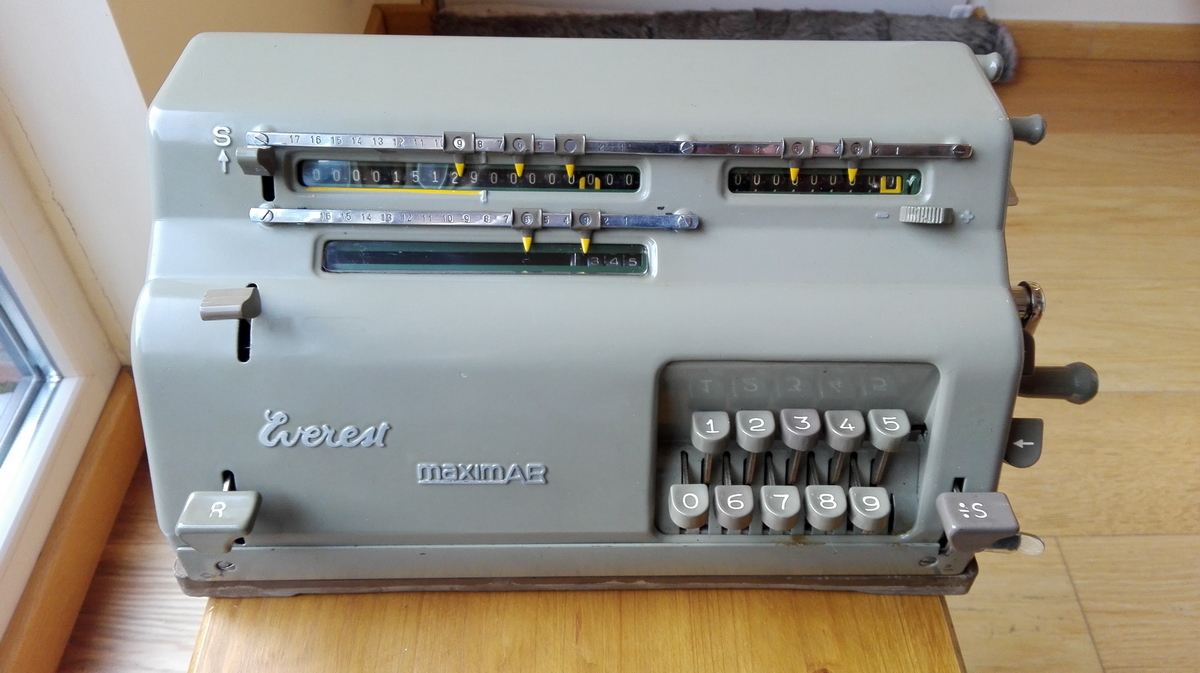
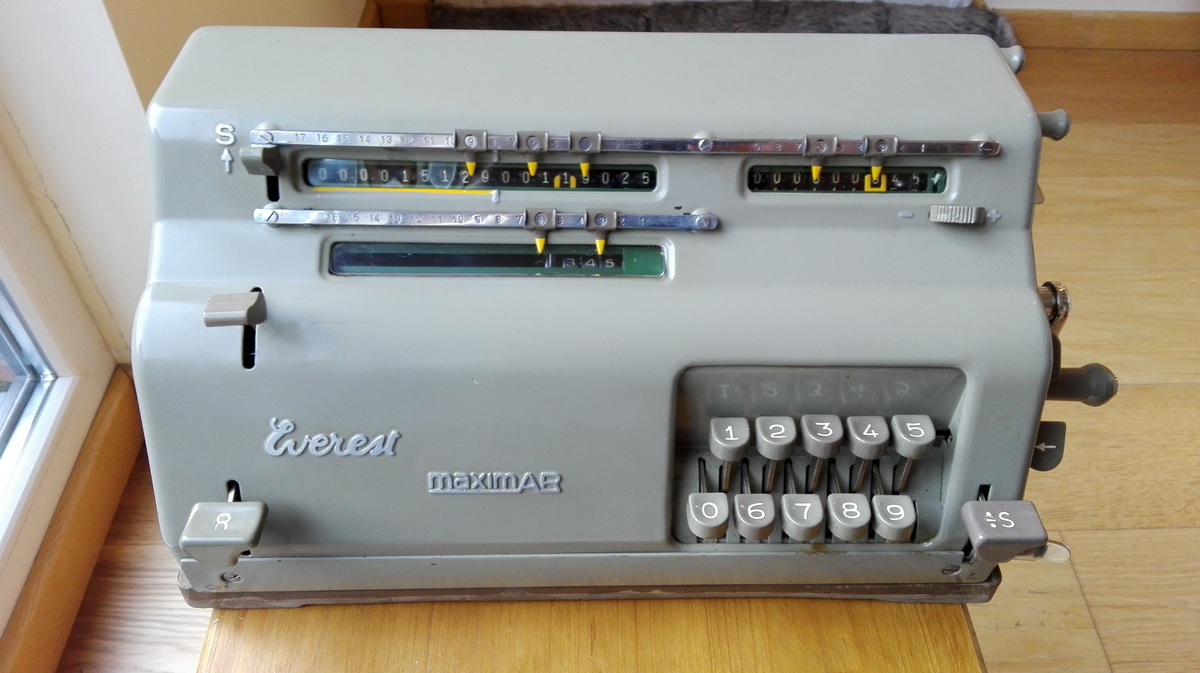
The same procedure is used for backtransfer of the right part of the result into the input
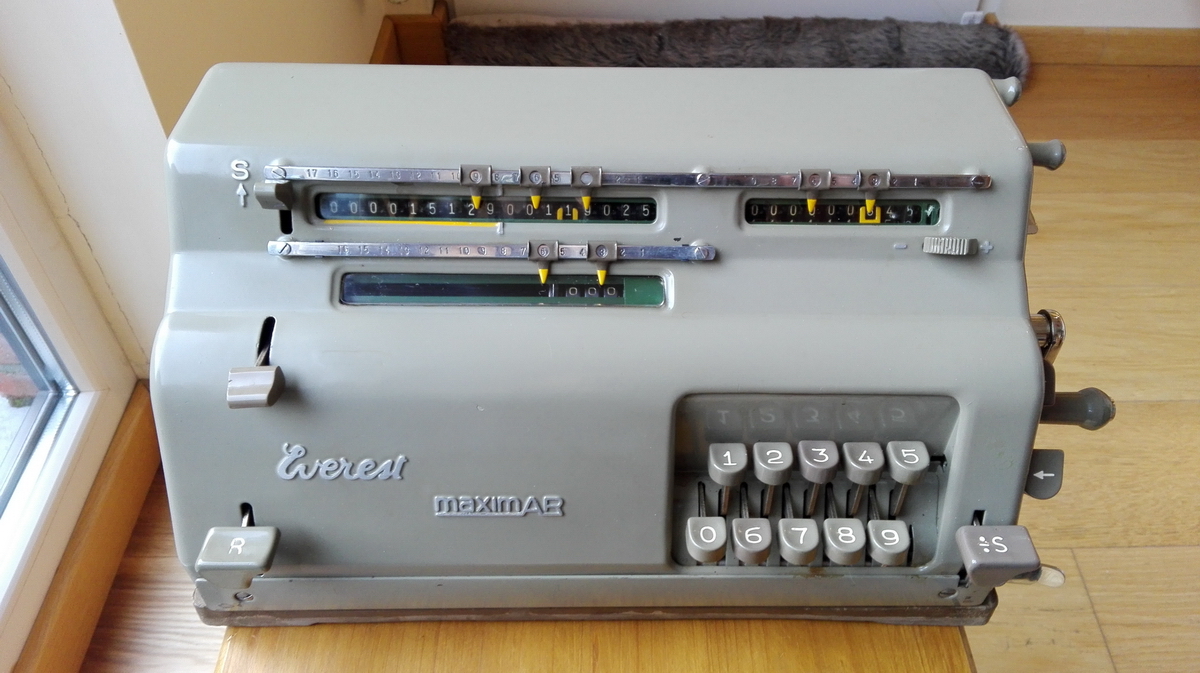
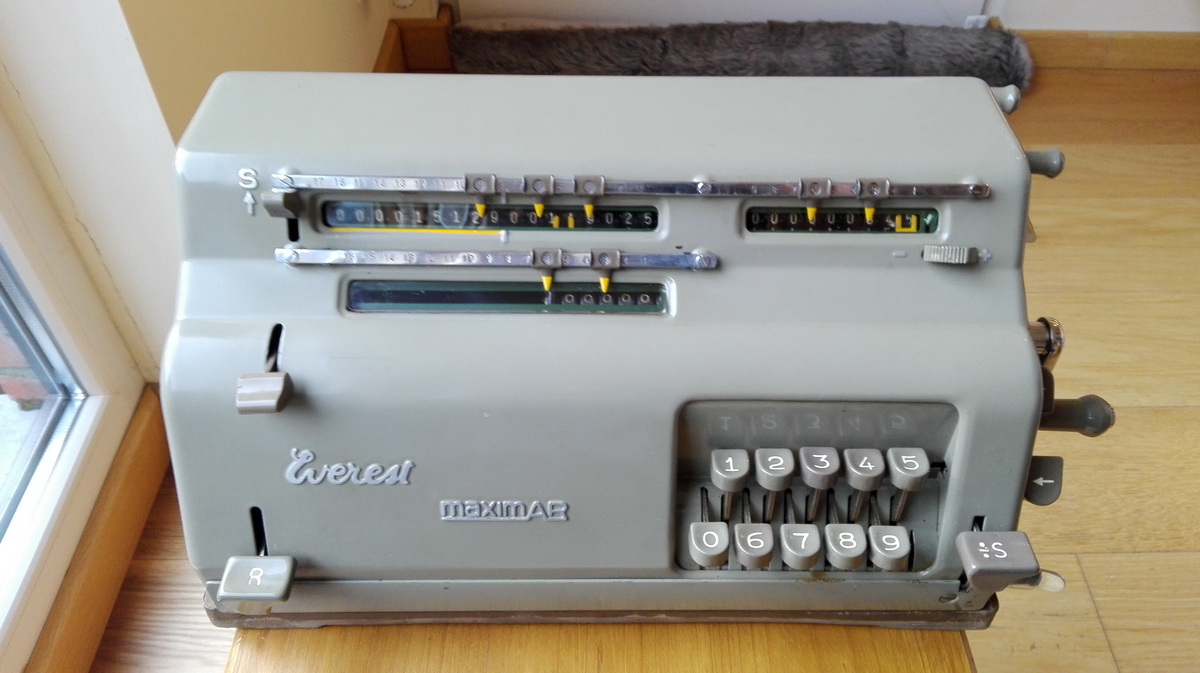
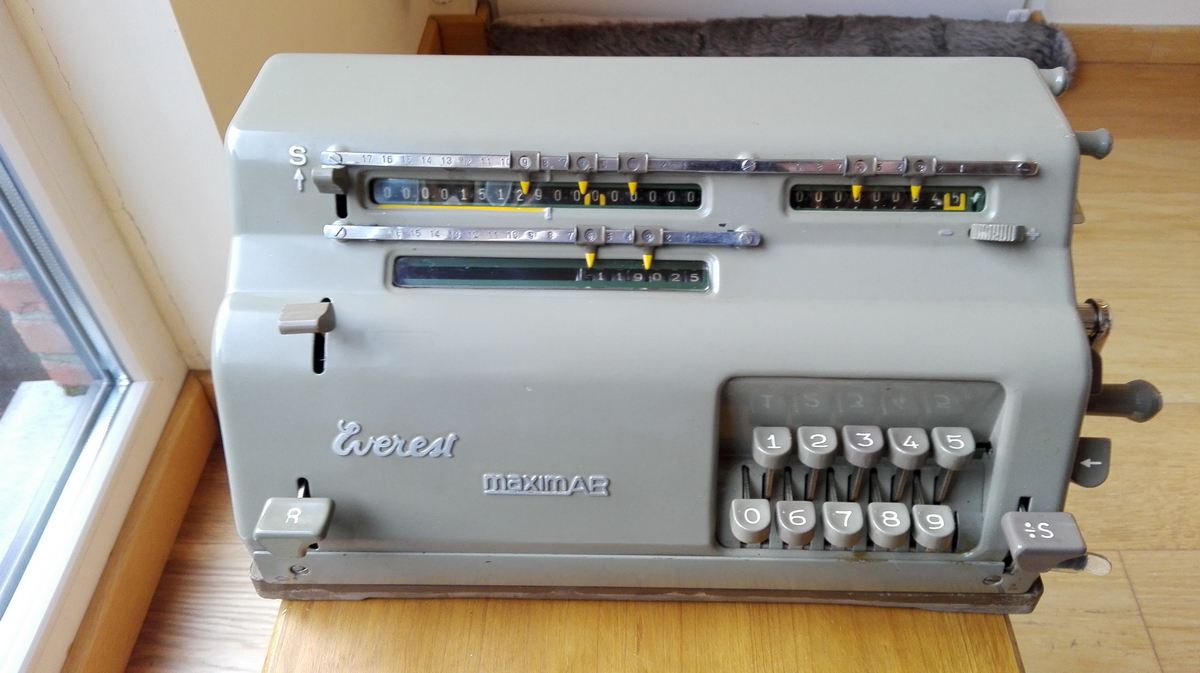
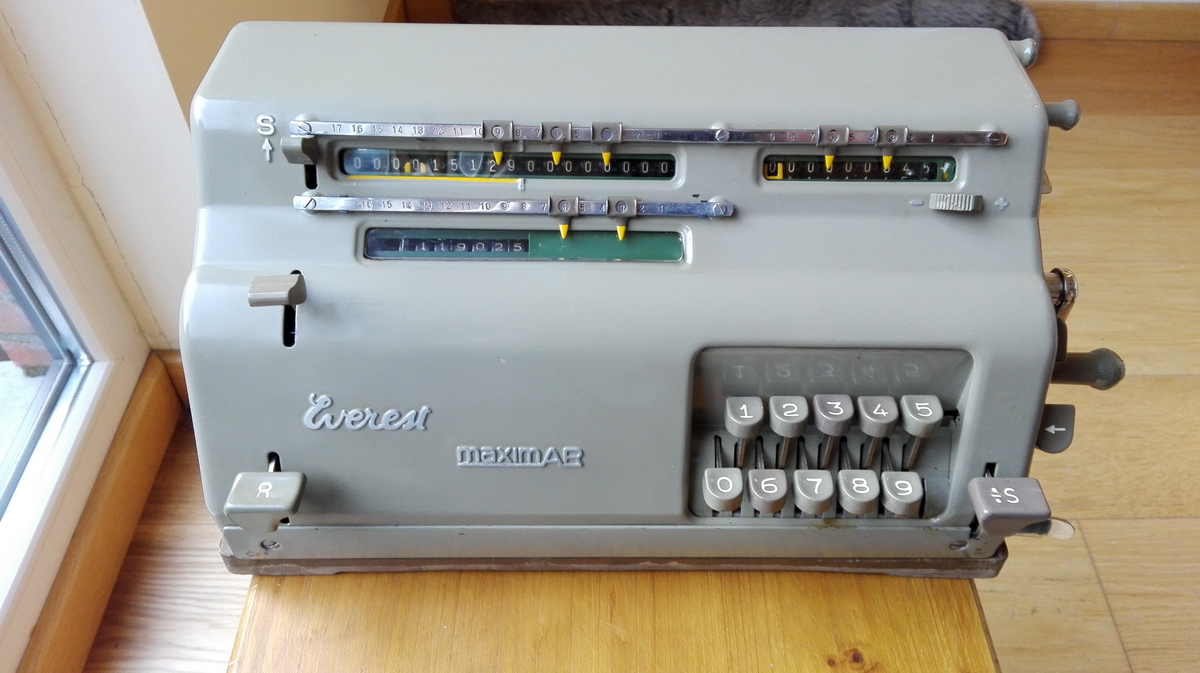
...and finally the second result is added to the totalizer register.
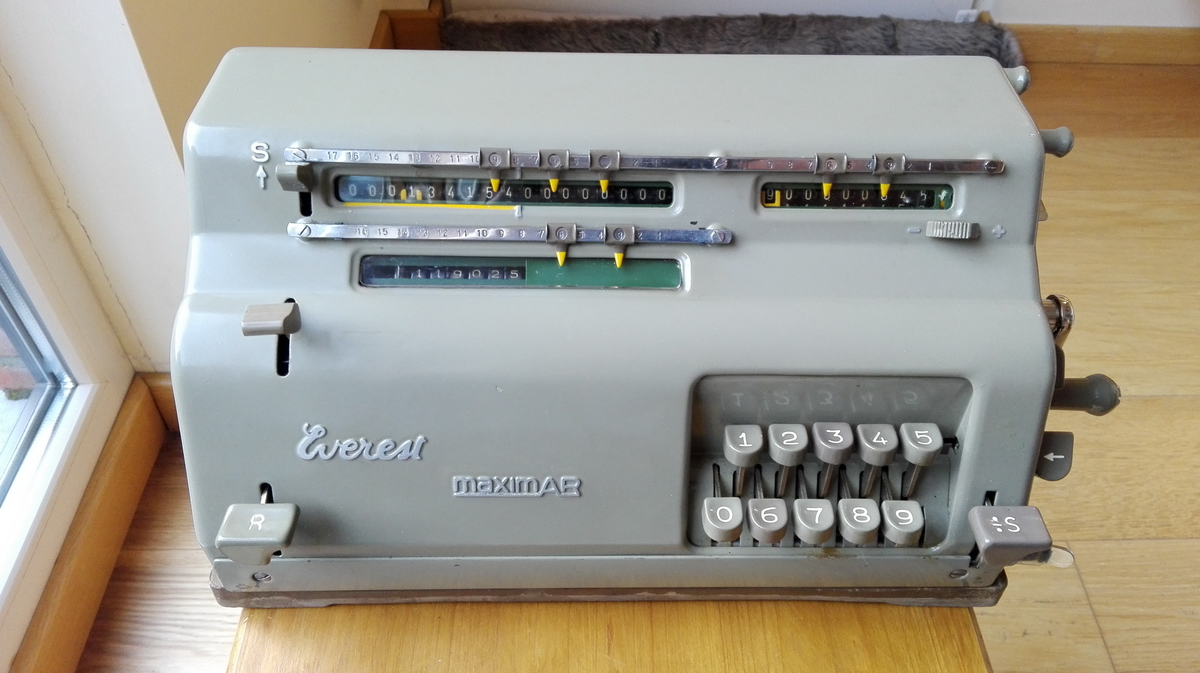
The total can be put back into the input by backtransfer from the S register, and then used in the right part of the register by carefully operating the chrome reset crank for the input on the bottom right, so it can be slid back to the right without clearing. At any time, the "S" register can be switched off by pulling the "S" switch back down, and the register will operate as one result register again.
There is a manual override for the sign of the counter. A yellow indicator tells the user where the highest value number in the input will end up in the result register - that is an interesting feature for planning a division or the use of the accumulator register. Finally, there's the button on the left panel of the machine, which can be used to unlock either the middle or bottom backtransfer buttons if one decides one does not want to go through with the backtransfer operation after all (e.g. because the setting register turns out to be in the wrong position).
